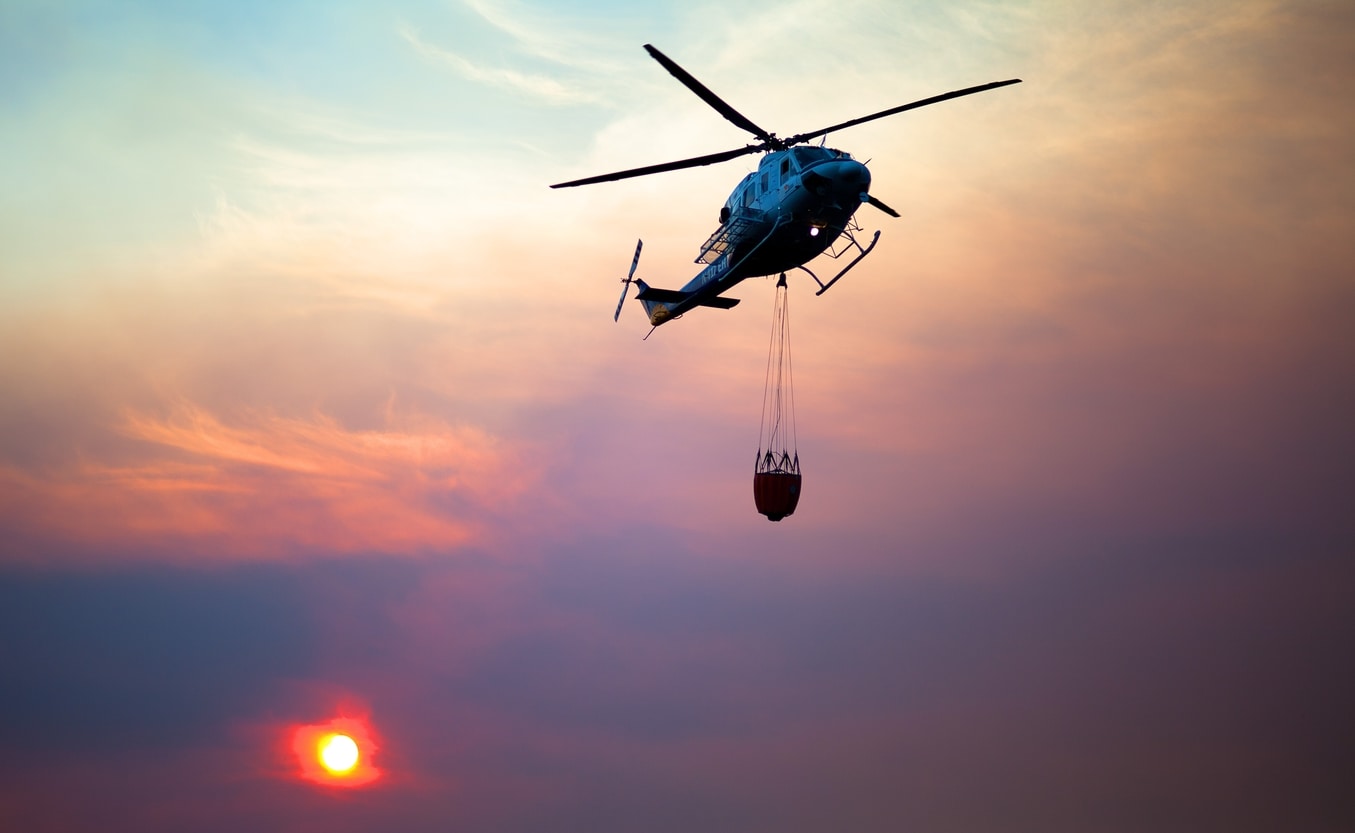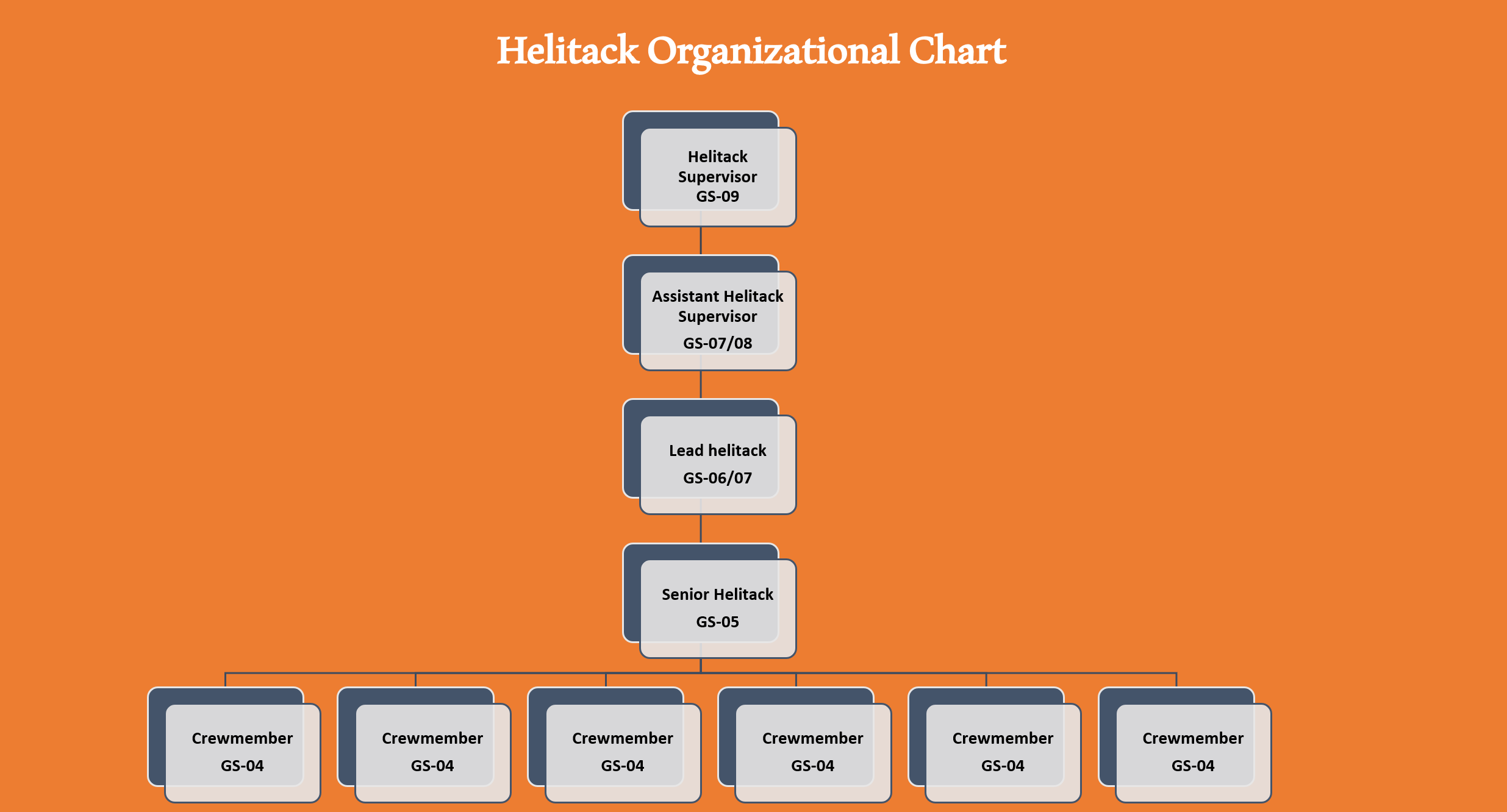
“Helicopter Attack”
That’s what helitack stands for. If that doesn’t get your heart racing, you might want to check your pulse for signs of life. For over 50 years, “men and [women] who were light in weight and tough in muscle and fortitude” have been riding helicopters into fires. Sometimes Mother Nature provides an easily accessible helispot for them to land and unload. If not, the ropes come out and they rappel out down the line. Back in 1960, the California Division of Forestry (now CAL FIRE) began experimenting with helicopters to support wildfire operations. The helicopter was perfectly suited for California fire operations. While fire managers in the Pacific Northwest and Northern Rockies had been using smokejumpers to fight backcountry fires since 1940, they weren’t widely utilized in southern California. However, in Southern California, because the hillsides were often covered in brush instead of trees, a helicopter could hover and have firefighters hop out. Or even land. The helicopter was an ideal resource for delivering this new firefighting force.
The chaparral and chamise-covered hills of SoCal are notorious for sparking fast, Santa Ana-driven fires, and CAL FIRE felt like they needed resources to match their fires. They needed lightning fast response for initial attack. So they decided to get a small group of highly-trained firefighters on-scene, fast, and see if they could keep it small. One of the ways they could keep it small was by leveraging their ship for water bucket drops. And if that didn’t work, they could coordinate the ferrying in of additional resources via the helicopter. If the fire was too mighty, and resisted their efforts to keep it at bay, they could transition from initial attack firefighting responsibilities to establishing helibase operations necessary to support an extended attack (aka a multiple shift fire).
Like Interregional Hotshot Crews, Helitack was soon picked up by the US Forest Service, and its popularity spread quickly into other states and agencies.
As of 2018, the following agencies host helitack crews:
The following states host helitack bases:
- California
- Arizona
- Nevada
- Oregon
- Washington
- Florida
- Georgia
- Washington State
- Wyoming State
Not surprisingly given its size, California has the largest number of permanent helitiack bases. As of November 2018, CALFIRE maintains 10 Helitack Bases throughout the state
- Alma
- Bear Valley
- Bieber
- Boggs Mountain
- Columbia
- Hemet Ryan
- Howard Forest
- Kneeland
- Prado
- Vina
For comparison, the Forest Service has 275 Rappellers at 13 Bases across the western United States (including California). Granted, that does not include all the other helitack bases (non-rappel), but the point is - CAL FIRE has a lot of helos!
What Do Helitack Crews do?
The Wasatch Helitack crew breaks down their mission into four pillars:
- Provide initial attack and helicopter operations management.
- Support extended attack and helicopter/ helibase operations management.
- Support local/ state/ national helicopter operations with individuals and modules (Helicopter manager, helibase manager).
- Support fire operations with individual assignments (Task Force leader. Strike team leader. Air Tactical Group Supervisor (ATGS))
How many people on a helitack crew?
You can have as few as 7, or as many as 24.
Most helitack crews will have about 10. Usually around 3 or 4 permanent, and 6-7 seasonals is pretty standard. Every year, the crew will hire somewhere between 1-5 new seasonal employees. Average, depending on the number of returning seasonals.
What are some desirable qualifications?
FFT1, B or C Faller. Constructing helispots is a common task for helitack crews. Being a skilled faller is good experience. EMT. Because of their ability to respond quickly with helicopters, having upgraded medical experience (beyond just first aid / cpr) is helpful and. Also, having some incident management quals like ICT5 is great to see as well.
Alright - you’re hooked! You want to be a helicopter crewmember. Next question:
What Are the Requirements?
According to the Twin Falls BLM website:
WHO WE ARE LOOKING FOR-Twin Falls Helitack will fill several seasonal positions with independent thinking, self-motivated, physically fit employees who conduct themselves professionally in all circumstances. There are student positions available and opportunities for late season work.
Applicants must have one season (90 days) of fire experience to be considered for a helitack crew. Minimum qualification of FFT2 is required. Additional qualifications such as FFT1, ICT5, FAL2 and HECM are valuable, but not required.
Crew Structure
Here's an example of a 10 person Helitack Organizational Chart:





